Project GIPF is a series of eight abstract strategy games designed by Kris Burm. Each game features a hexagonal playing area and involves a dwindling of either pieces or playing area mechanic. The way they approach these elements is not only unique, but combines what I feel are the best qualities in most abstracts: simple rules that reveal complex game play.
If you’ve never heard the games within Project GIPF, GIPF, TAMSK, ZÈRTZ, DVONN, YINSH, PÜNCT, TZAAR, and LYNGK, I encourage you to seek them out, either in cardboard and bakelite or digitally online. They are well worth your time.
Today’s game: GIPF
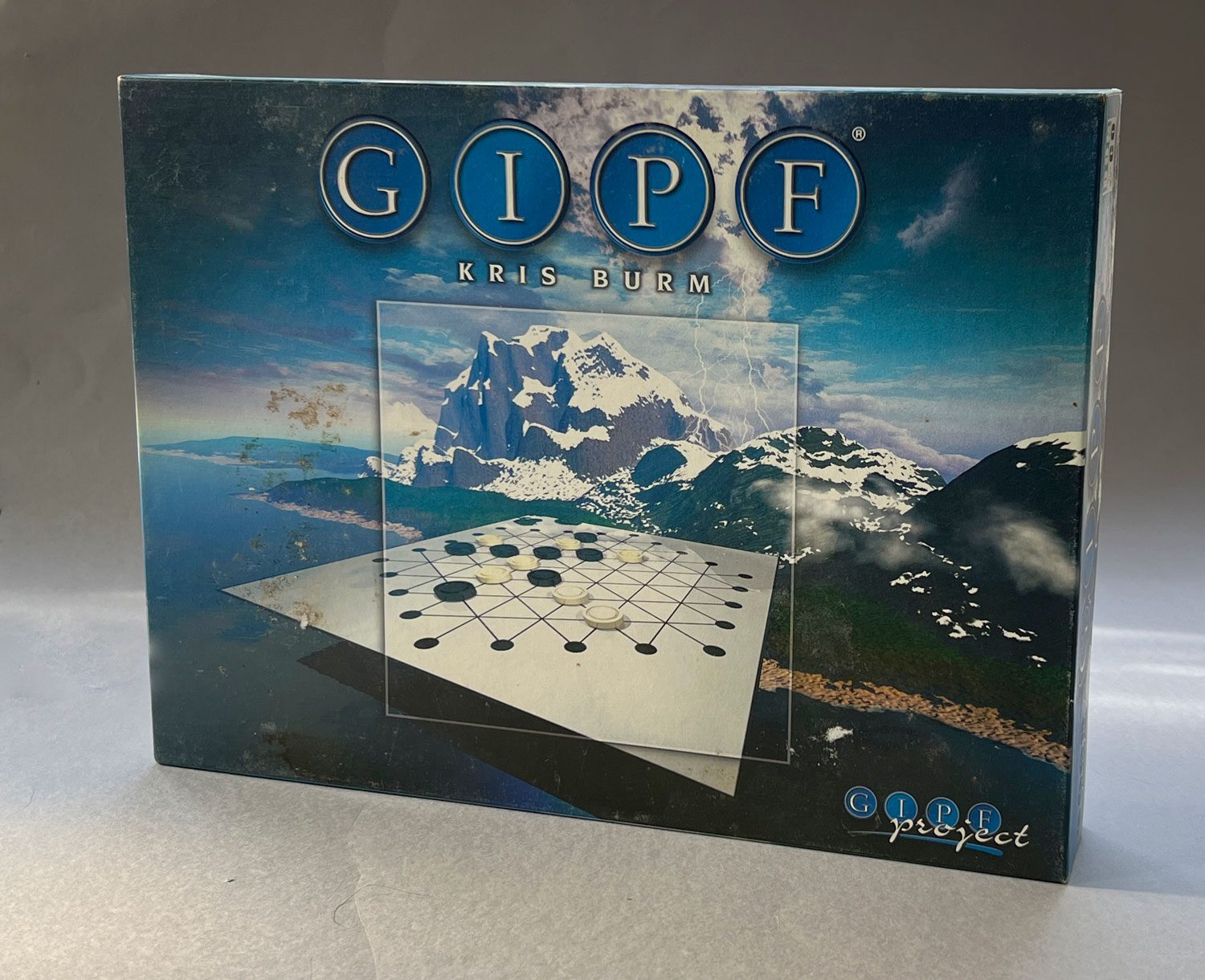
GIPF is the first in a series of abstract strategy games known as the GIPF Project. Designed by Kris Burm and released in 1997, GIPF is one of those wonderful games that can be taught in under a minute, yet need careful study to win.
To win, you need to either capture all three of your opponent’s GIPF pieces or have your opponent unable to make a move.
Playing GIPF
The playing board is a hexagon, with four intersections along each edge. These extend to an emphasized point just past the white border. Two straight lines come from each non-corner point (with one from each corner), at 30° angles. This creates a triangular grid for pieces within the playing area.
Players start by choosing a color to play (black or white) and then each places one piece along the outer corner points of the hexagon to create a pair of intersecting, equilateral triangles.
From there, you’ll take turns placing one of your 15 other pieces on any of the outer dots and pushing that piece along a line into the next intersection on the board.
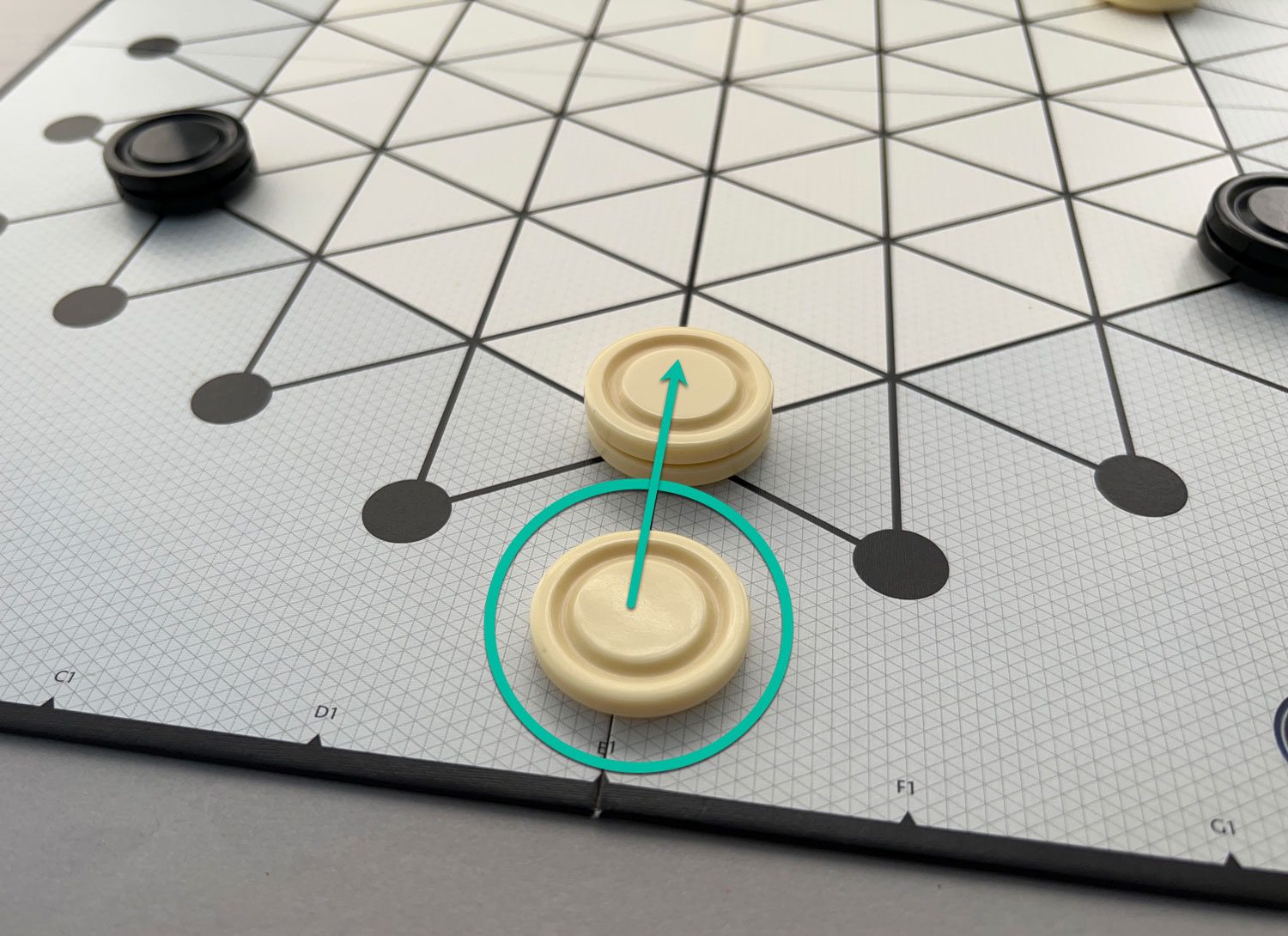
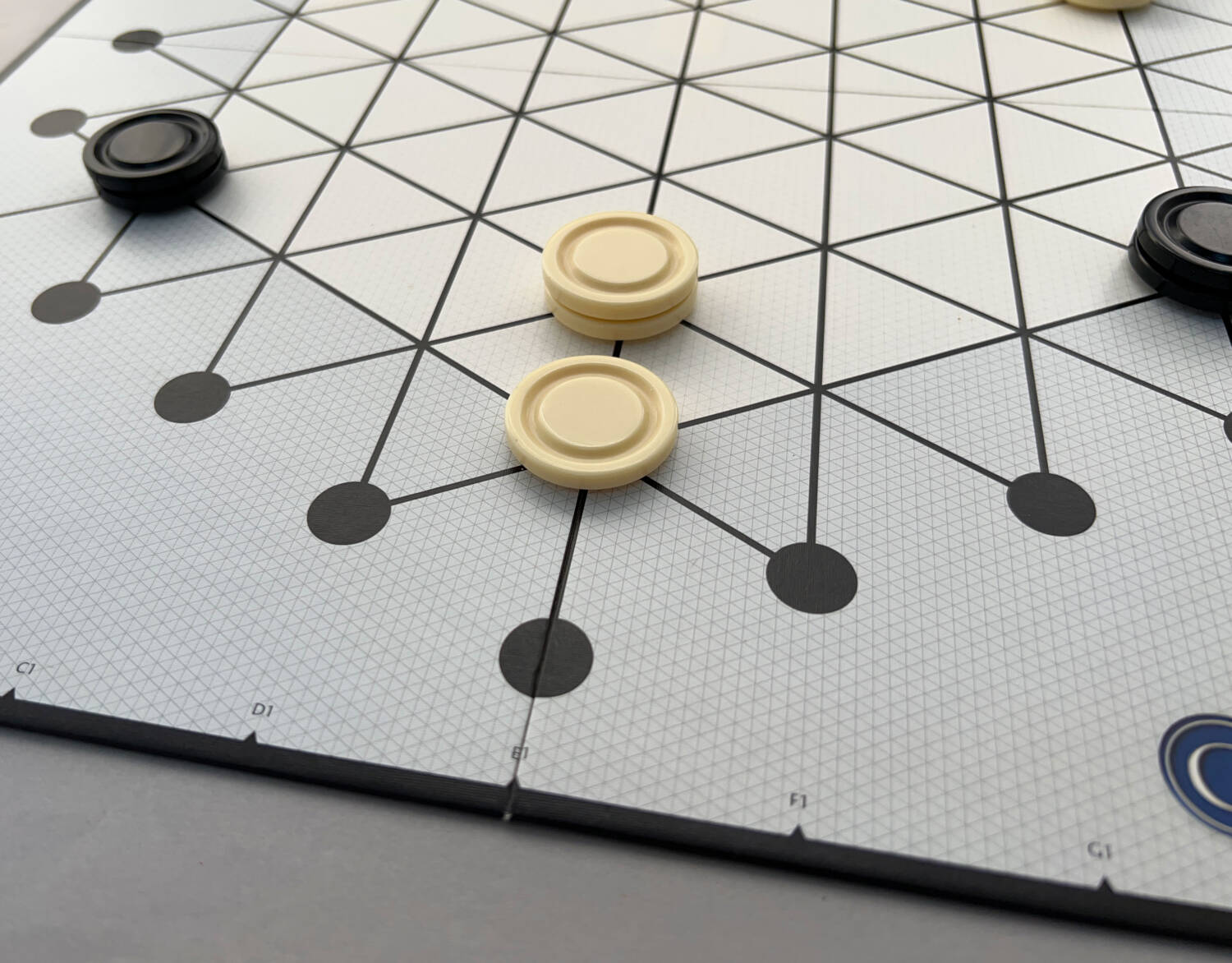
Once a piece enters the board, the only way it can be moved again is by being pushed in a straight line by another piece. When you push that new piece into the board, you’ll also push any piece directly in line with it, as well as any pieces in line with that piece. This means you might push one piece or many pieces.
It also means the composition of the board will change from turn to turn, sometimes dramatically. Visualizing how the board will look when deciding on which move to make takes some ingenuity.
However, you only have fifteen pieces to play with. To keep GIPF from being a very short game with lots of draws, there is a special rule to allow you to reclaim pieces. If at the end of either player’s turn you have four of your pieces in a row, you take them off the board. You can then play these returned pieces on your upcoming turns.
Remember, you can win if your opponent cannot make a move. Anytime you see them running low on pieces, blocking their ability to create a four-in-a-row can win you the game.
It is also possible to capture your opponent’s pieces. If you create a four-in-a-row of your own pieces and any of your opponent’s pieces are at either end of your four-in-a-row, you put them off to the side. They are out of the game.
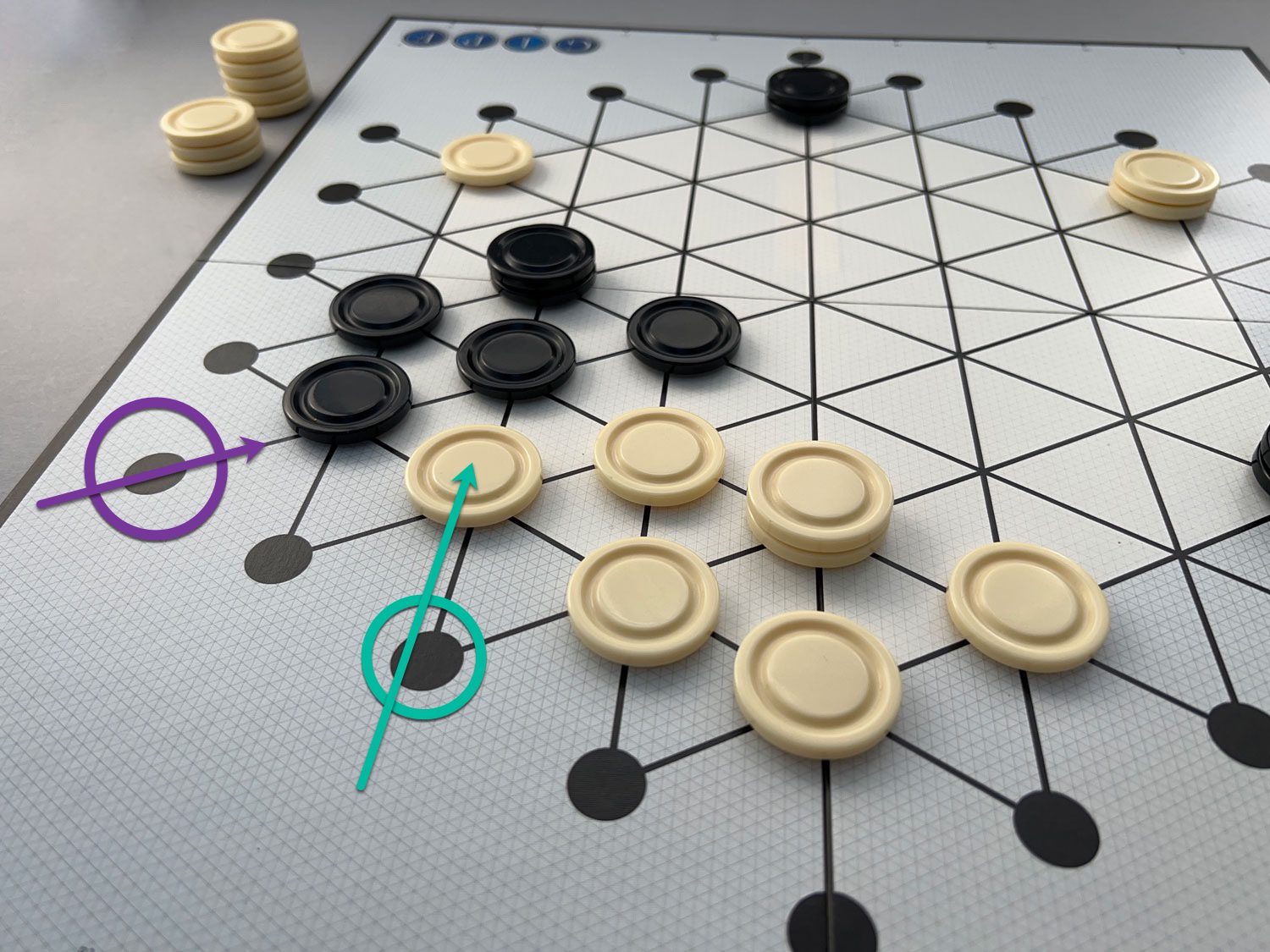
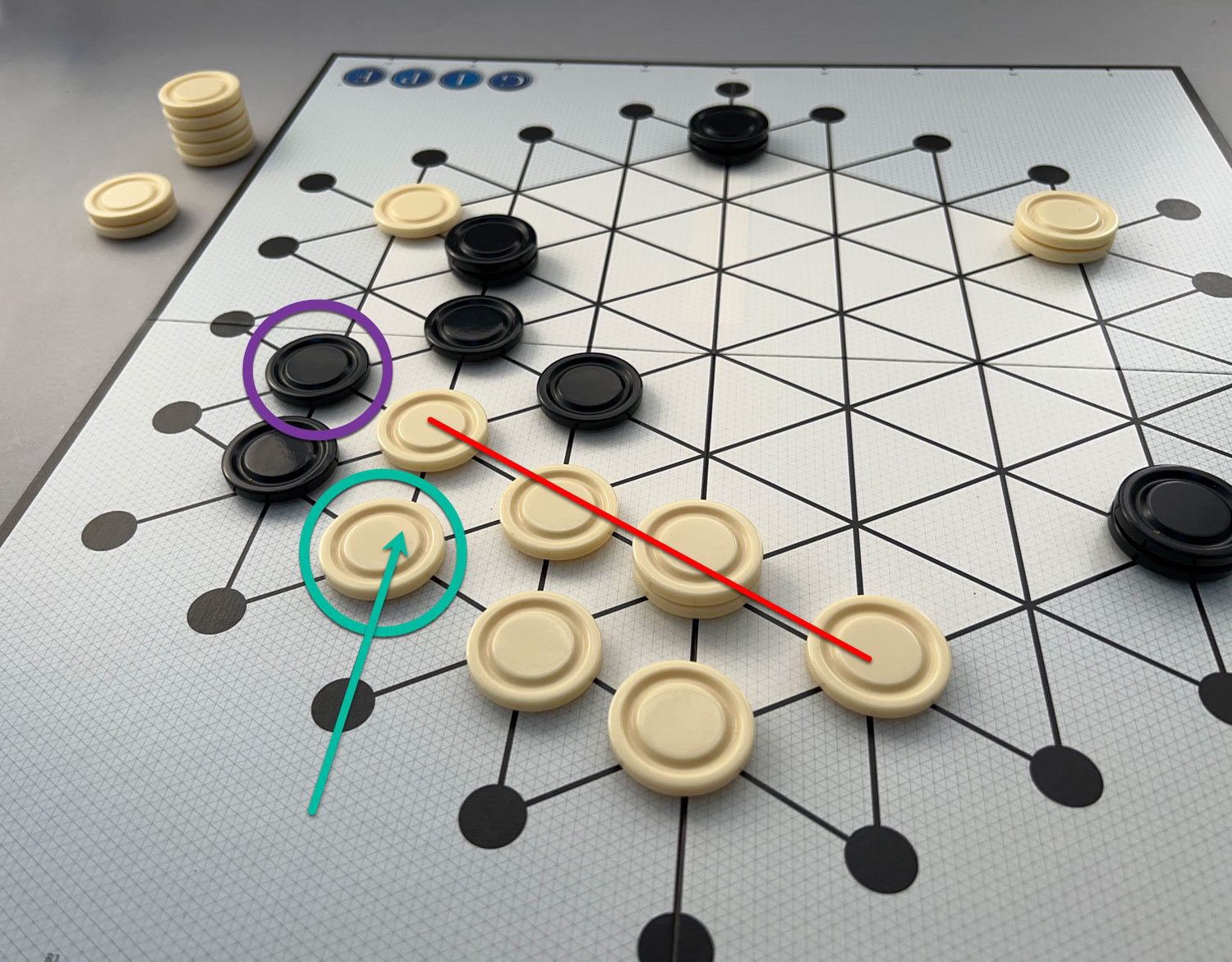
GIPF Thoughts
As you’ll see in other games in Burm’s GIPF Project series, in GIPF, you’ll need to approach each move from both an offensive and defensive perspective. I lost my early games by not paying attention to how many pieces I had left to play. By the time I realized I was running short, it was too late to create a four-in-a-row of my own pieces to reclaim any.
Throughout a game of GIPF, both players will need to recycle their own pieces. While a necessary part of the game, removing four of your pieces will often leave you at a disadvantage. Plan for this as best you can.
Variations
The rule book offers three ways of playing GIPF. The Basic Rules has the board starting as I described here, with three individual pieces from each player on the board. This allows for an initial even distribution of pieces on the board from which to build upon.
The Standard Rules have players starting with a similar setup. However, each players’ pieces on the board make use of the GIPF Potentials. Each game in Project GIPF has its own set of Potentials. These are extra pieces that change the way the game is played in subtle, but important ways.
In GIPF, the Potentials are GIPF pieces with a slightly different pattern on the top. These pieces are stacked atop a standard piece. The Standard Game allows for a second win/lose option: if all three of your GIPF Potentials are removed from the board, you immediately lose regardless of how many other pieces you have remaining in your supply.
The Tournament Rules have the game starting with an empty board. Players must make use of GIPF Potentials, but there is no set number of Potentials required. A player can choose to use only one of their Potentials, thereby giving their opponent a single target to capture. Or, you can use three or more Potentials by stacking two standard pieces together to create additional stacks. This makes it harder for your opponent to capture all your GIPF Potentials, but it also decreases the number of pieces you have to play with.
It’s easy to see why GIPF generated such interest when it was released. It is an easy game to learn that only takes a few moves before you see hints of the complexity that awaits you in future moves. GIPF is a game that requires strategic planning yet never feels overly complex—and never fails to surprise.
Here's a list of all Project GIPF reviews.

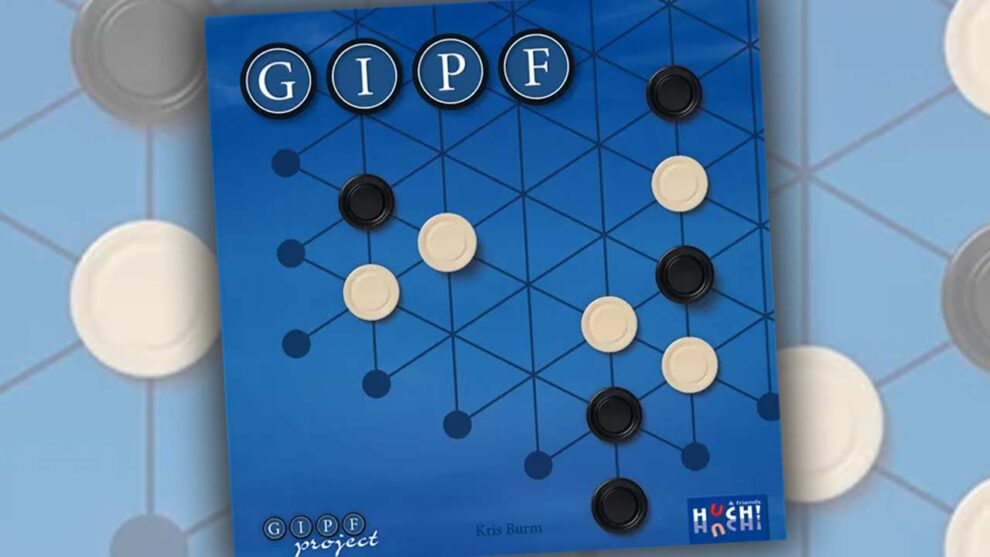









I really need to check these out! This is the sort of game that speaks to me.